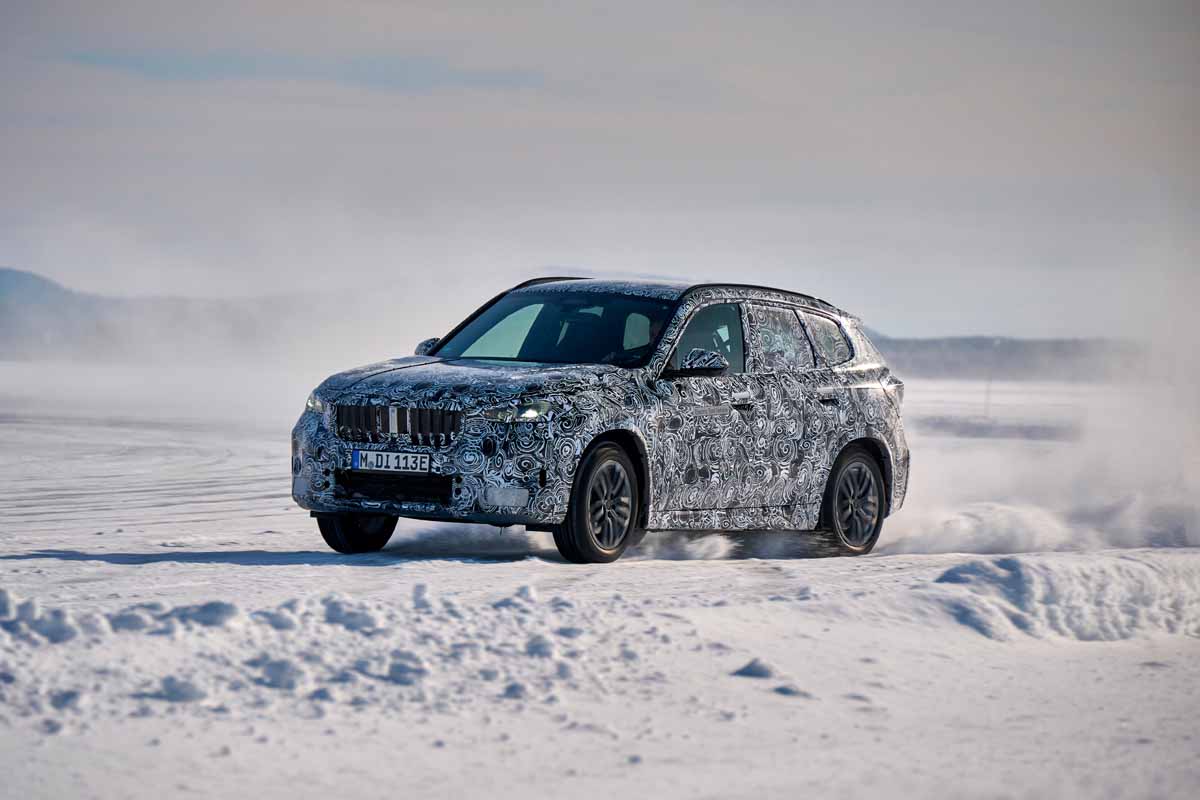
The countdown is on for the third generation of the BMW X1 – and for the first fully electrically powered Sports Activity Vehicle (SAV) in the premium compact segment. The new BMW iX1 (electric power consumption combined: 18.4 – 17.3 kWh/100 km in the WLTP cycle; CO2 emissions: 0 g/km; electric range: 413 – 438 km [257 – 272 miles] in the WLTP cycle; figures in the NEDC cycle: – ; predicted values based on the car’s current stage of development) has now successfully completed driving dynamics testing at the BMW Group’s winter testing centre in Arjeplog, northern Sweden. On snow-covered roads and specially prepared ice tracks around the town of Arjeplog close to the Arctic Circle, it joined the conventionally powered and plug-in hybrid variants of the new BMW X1 in passing integrated application tests for its powertrain and chassis systems. Another fully electric model from the BMW Group has therefore reached the final phase of series development process.
This test of strength and endurance in bitterly cold temperatures and wintery road conditions subjected the electric motors, electric all-wheel-drive technology, high-voltage battery, power electronics and charging technology of the BMW iX1 to a particularly exacting examination. Its fifth-generation BMW eDrive technology uses the latest battery cell technology and intelligently controlled heat management to enable short charging times and a long range, even in extreme sub-zero temperatures. With two electric motors (one at the front axle and one at the rear), whose power delivery is coordinated precisely to optimise traction and dynamic performance, and its extremely fast-acting near-actuator wheel slip limitation tech, the BMW iX1 is perfectly equipped to provide assured progress over any terrain.
At the BMW Group’s winter testing centre in Arjeplog, the powertrain and chassis systems of new models are put through a process of exceptionally detailed fine-tuning. Snow-covered roads and areas of frozen lakes prepared specially for these testing programmes present the BMW Group’s development and testing engineers with the ideal conditions in which to hone the interplay of the motors, electric all-wheel-drive technology and suspension control systems at the longitudinal and lateral dynamic limits. The ice surfaces, in particular, provide the perfect, reproducible conditions in which to explore in detail and optimise how the powertrain and chassis work together. This intensive testing programme lays the foundations for reliably secure, assured driving characteristics – with the sporting edge drivers expect of a BMW – and a well resolved overall vehicle experience.
The BMW iX1 is the brand’s third SAV to feature a purely electric drive system and will be added to the model range immediately after the launch of the new BMW X1, which is scheduled to get underway in autumn 2022. The fully electrically powered model is based on a flexible vehicle architecture and will be produced on the same assembly line as the combustion-engined and plug-in hybrid variants of the compact SAV.
The fuel consumption, CO2 emissions, electric power consumption and operating range figures are determined according to the European Regulation (EC) 715/2007 in the version applicable. They refer to vehicles in the German market. Where a range is shown, the figures take into account the impact of any optional extras.
All values were calculated based on the new WLTP test cycle. WLTP values are taken as the basis for determining vehicle-related taxes or other duties based (at least inter alia) on CO2 emissions as well as eligibility for any applicable vehicle-specific subsidies. Further information on the WLTP and NEDC measurement procedures can also be found at www.bmw.de/wltp.






























